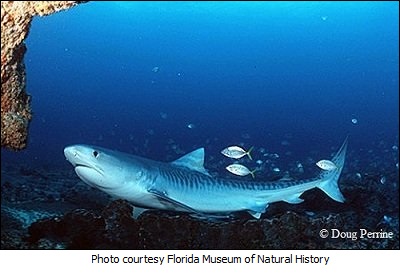
|
|

|
|
| April 23, 2024 |
|
Shark attacks reach new high in 2015 
Last year was not a good time to swim with sharks, according to new data. The big fish attacked humans 98 times worldwide last year, the most since the University of Florida began recording the International Shark Attack File 57 years ago.
The incidents tallied by the Florida Museum of Natural History at the University of Florida do not include those in which a human provoked the shark, according to a statement from the museum. Most of those bitten by a shark escaped with just injuries, but sharks also killed six people in 2015. Most attacks occurred in the U.S., which racked up a record 59 incidents. Australia came in second with 18 attacks, and South Africa came in third with eight. The total of 59 unprovoked attacks in the United States (including seven in non-North American Hawaii) set a U.S. standard, surpassing previous highs of 53 achieved in 2012 and 2000 and the 2014 total of 52. There were no fatalities in North American waters and the single U.S. fatality occurred in Hawaii. Elsewhere, multiple unprovoked attacks occurred in Australia [18], South Africa [8], and Reunion [4], the Canary [2] and Galapagos [2] islands, with single incidents reported from the Bahama Islands, Brazil, Egypt, New Caledonia, and Thailand. Australia's total of 18 unprovoked attacks was its highest total since 2009 (22). Twelve attacks occurred in New South Wales, two in Western Australia, two in Queensland, and single incidents in South Australia and Victoria; the single fatality occurred in New South Wales. As has been the norm for decades, Florida had most (51%) of the unprovoked attacks in the United States and 30.6% of the world total. The total of 30 Florida bites was higher than the 2014 total of 23 but did not approach the record high of 37 that occurred in 2000. Also following recent trends, Brevard County [8] and Volusia County [7] had the largest numbers in the state. The higher number of encounters in these two adjacent central-east coast counties is attributable to high aquatic recreational utilization of the area’s long and attractive beaches and waters by both Florida residents and tourists, including large numbers of surfers, and to the rich nature of its marine fauna. Other Florida counties having bites were Duval (4), Palm Beach and St. Johns (2 each), and Broward, Collier, Indian River, Martin, Miami-Dade, Nassau, and St. Lucie (1 each). Additional U.S. attacks were recorded in North and South Carolina (8 each), Hawaii (7), and California and Texas (2 each), with single bites reported from Mississippi and New York. The Carolina totals were a bit high for those regions and were notable in that most occurred over a relatively short period of time. Before 2015, the most shark attacks ever logged in a single year was 88 in 2000. The uptick is likely a result of the growing shark population and the fact that people are spending more time in the sea, George Burgess of the Florida Museum of Natural History said in a statement. “Sharks plus humans equals attacks,” he said. “As our population continues to rapidly grow and shark populations slowly recover, we’re going to see more interactions.” Burgess added that warmer waters could be contributing to the increased number of attacks. (Source: Time/UF) Story Date: February 10, 2016
|